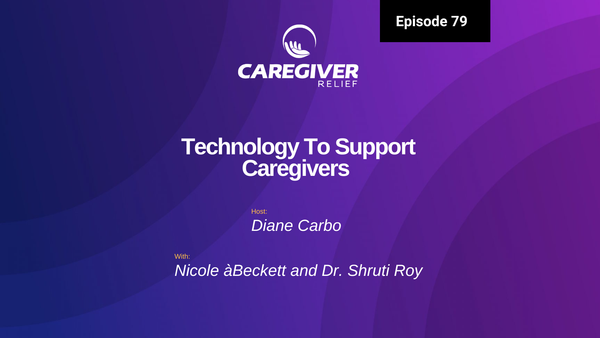Caring for a Loved One with Dementia: Navigating the Challenges and Choices of a Move
Moving a loved one with dementia to a new home can be challenging. Tips include early communication, maintaining familiar routines, bringing personal items, visiting the new place beforehand, staying positive, and gradual introduction. Regular visits and patience are key for a smooth transition.

When a family member receives a dementia diagnosis, it marks the beginning of a challenging journey, not only for the person with dementia but also for their caregivers. Alzheimer's disease and other forms of dementia progressively impair a person's ability to manage everyday tasks, leading to significant safety concerns and a decline in communication skills. It's essential for family members and caregivers to adapt to these changes and provide the necessary dementia care.
As the disease progresses, the role of family members evolves. Engaging in support groups and gathering information from these organizations can help in improving caregiving skills and understanding the road ahead.
One of the major decisions many families face is whether to move their loved one to a facility better equipped for dementia care, such as nursing homes or specialized memory care units. This decision involves considering various factors, such as the safety features of the new environment, the level of personal care required, and the stage of dementia. Early stages may allow for in-home care with adjustments like adding safety features and assistive devices to ensure safety and prevent falls. As dementia progresses, more intensive care might be necessary.
Effective communication, a key aspect of caregiving, often involves speaking slowly, using clear and simple language, and paying attention to body language. Visual cues and familiar objects can help maintain a sense of normalcy and ease the caregiving journey. Personal activities should be tailored to the individual's abilities and preferences, adapting as their needs change.
When considering a move, it's important to involve the person with dementia in the decision-making process as much as possible. This can help maintain their sense of autonomy and reduce distress. In the middle stages of dementia, when decision-making becomes more challenging, families might need to step in, always prioritizing the well-being and preferences of their loved one.
Dementia and moving can be difficult.
Making a move to a new environment is not easy for anyone, in the best of times. Moving is a major stressor in life. When a person has dementia, it is even more difficult. Change may cause an increase in confusion and negative behaviors to emerge.
This is also a difficult time for the primary caregiver. There may be feelings of guilt, apprehension over the change in roles. Many caregivers have a difficult time adjusting ... from providing hands on care, to the new role as advocate. It is important to be aware that a move and change affects everyone. Emotions can be high at a time like this for all involved.
The transition to a new living environment can be a source of conflicting emotions for both the caregiver and the person with dementia. To ease this transition, maintaining a familiar environment with personal items and a consistent daily routine can be helpful. Caregivers should also focus on self-care, as the stress of caregiving can be overwhelming.
Joining local support groups can provide emotional support and practical advice. These groups often share tips on managing troubling behavior, maintaining a healthy diet with nutritious foods, and ensuring regular medical appointments.
As dementia progresses to its later stages, more specialized care might be necessary. This could involve professional health care decisions, utilizing resources like the National Institute on Aging for guidance. It's also essential to prepare for the possibility of clinical trials or other medical interventions that may offer hope in managing the symptoms of dementia.
How to prepare for the move will depend on the stage of dementia the family member is in at the time of the move. In the early stages of dementia, it is important to include the family member, as much as possible.
It is so important to address the future care needs of a family member as early as possible in the disease process. Having conversations on the changes in the level of care needed and who will provide them can be helpful. Knowing the expectations of the family member with dementia is important. The limits and boundaries of the family caregiver... can ease the feelings of guilt and inadequacy of the caregiver.
Knowing the wishes and expectations of the family member with dementia ... as far as future care needs give everyone the ability to make plans for the future. This gives the family member with dementia and the family caregiver an opportunity to look at some facilities... and make decisions while they are still able to give input into their care.
Moving a Person with Dementia Having the Discussion
Finally, caregivers should be aware of the warning signs indicating that their loved one's needs are changing. This includes a decline in communication skills, an increase in troubling behavior, or a decrease in self-management abilities. It's important to adapt care strategies accordingly, seeking help from healthcare professionals when needed.
Caring for someone with dementia is a journey filled with challenges, but also moments of connection and love. With the right support and resources, caregivers can make informed decisions to ensure the best possible quality of life for their loved one.
Of course, this is not an easy subject to address. Many family members find that they are now faced to make a change in level of care and feel anxious and guilty.
There are many situations when the family member with dementia no longer remembers anything that is explained to them. Telling them about a move to a new place may upset them on moment, only to have them forget what you told them.
Moving a loved one with dementia to a new home can be a challenging and emotional process. Here are some tips for caregivers to help make the transition smoother and more comfortable for both the caregiver and the person with dementia:
Early and Gentle Communication: Start discussing the move early in a gentle and reassuring tone. Use simple, clear language and focus on the positive aspects of the move. Emphasize safety, comfort, and the care they will receive.
Involvement in Decision Making: Include your loved one in the decision-making process as much as possible. This can help them feel a sense of control and reduce anxiety.
Familiarize with the New Environment: If possible, visit the new home with your loved one before the move. Familiarizing them with the new environment, staff, and residents can ease anxiety.
Maintain Familiarity: Bring familiar items from the current home to the new environment. This can include photographs, favorite furniture, bedding, and other personal items that provide comfort and a sense of continuity.
Create a Comforting Atmosphere: Set up the new living space to resemble their previous environment as much as possible. This can help in making the new place feel like home.
Simplify the Process: Keep the actual moving process simple and calm. Try to move during a time that is less disruptive and ensure that the new space is set up before your loved one arrives.
Consistent Routine: Try to maintain a regular routine as much as possible. Familiar routines can provide comfort and a sense of normalcy.
Stay Positive and Reassuring: Throughout the process, maintain a positive attitude. Reassure your loved one that they are safe and cared for.

Gradual Introduction: Introduce your loved one gradually to new people and the new environment. Overwhelming them with too many changes at once can cause anxiety.
Goodbye to the Old Home: If it's not too distressing, allow your loved one to say goodbye to their old home. This can provide closure and help them understand the transition.
Post-Move Support: Visit often after the move. Regular visits can help your loved one feel loved and not abandoned. During visits, try to engage in familiar activities.
Communicate with Staff: Share important information about your loved one with the new caregivers. This includes likes, dislikes, habits, and any triggers that might cause distress.
Monitor Adjustment: Pay close attention to how your loved one is adjusting. Look for signs of stress or discomfort and work with the care team to address any issues.
Join Support Groups: Consider joining caregiver support groups. They can provide valuable advice and emotional support.
Take Care of Yourself: Remember to take care of your own health and well-being. Caregiving can be stressful, and your health is equally important.
Seek Professional Advice: Don’t hesitate to seek advice from professionals such as doctors, nurses, or geriatric care managers, especially if you encounter challenges during the transition.
Emergency Preparation: Ensure that the new home is prepared for any emergencies, including having updated medical information and contact numbers readily available.
Patience and Compassion: Finally, be patient and compassionate. Moving can be disorienting for a person with dementia, and they will need time and support to adjust.
Moving is not easy. There are things that can be done ahead of time to ... make the transition from home to a new environment less stressful.
If you are moving into a nursing home or assisted living... move some preliminary things into the room to make it familiar.
Placing... pictures of family members ... familiar bedding covers pillows and if possible, a familiar piece of furniture. This is also a good time to provide the facility staff with as much information as possible.
All of our guides, downloads, worksheets, Premium courses
Click Subscribe To Get Started.
Giving the staff information on the:
• Likes
• Dislikes
• Hobbies
• Food interests
• And other preferences will help make the transition easier.
Schedule the move for the time of day when the family member with dementia is at their best. This could be in the morning or early afternoon.
Many family caregivers feel anxious about how to explain what is happening. Caregivers feel worried that there may be negative behaviors... or even agitation if they make the family member with dementia aware... that this is a permanent move.
This is a common feeling that most caregivers experience. Know that you are not alone.
Develop A Person Centered Profile
Create A Person Centered Profile For Your Family Member
On the day of the move, make things a normal as possible. For some individuals, in the later stage of dementia, you may just want to suggest you are going for a drive. Suggest that you are looking at a new senior living place. The limited insight into things and poor short-term memory can make communication difficult. No matter what you say, your family member may not understand it.
Expect the family member with dementia to want to “go home”. This is a common reaction and one that you will hear often. The home they are referring to is often the home in their long-term memory. To some, it is looking for a feeling of comfort. Not a physical place.
How to Respond to "I want to go home."
The facility staff may attempt to get your family member involved in an activity. This is to make them feel welcome, as well as a distraction. This may give the family caregiver a chance to leave.
When a family member with dementia reacts badly to the move, the facility may ask you to stay away. This may be for a few days to give your loved on a chance to adjust.
Feel free to stop in and check on them anyway. You may need to do this for your own peace of mind. This does not mean you have to be seen by your family member, but sometimes a familiar face is welcome.
Persons with dementia need consistency. In time, they will adjust to their new environment and begin to feel safe and secure. It is important for the family caregiver remember that safety and care is important... and can be provided in this new environment.
Our Resources section can help you find the information and tools that you need. We have courses, videos, checklists, guidebooks, cheat sheets, how-to guides and more.
You can get started by clicking on the link below. We know that taking care of a loved one is hard work, but with our help you can get the support that you need.
Click here to go to Resources Section now!




